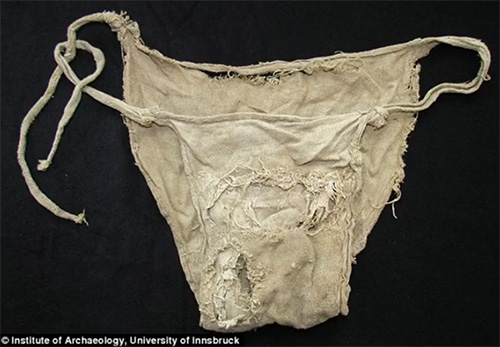Coming across well-preserved ancient clothing is a rare occurrence, making this 1,700-year-old tunic a truly unique find. As Norway’s oldest garment, it has managed to withstand the test of time despite being buried under snow for centuries.

Marianne Vedeler, a professor at the Museum of Cultural History at the University of Oslo, shared with Yngve Vogt of the Apollan Research Magazine that the Iron Age tunic discovered at Lendbreen is one of the oldest garments found in Norway. She mentioned that it is quite uncommon to come across such well-preserved clothing from ancient times, with only a few similar examples found in Europe.

During expeditions at the Lendbreen Glacier, researchers unexpectedly discovered a tunic. Thanks to Secrets of the Ice for the incredible find! As global warming accelerates glacier melt, numerous artifacts surface from the ice each year. These treasures provide valuable insights into the history of societies that relied on glaciers and highlight the intricate connection between humans and the natural world.

The discovery of the tunic and mitten at Lomseggen mountain in Norway, near the Lendbreen Glacier, has sparked intrigue among researchers. The mitten, dating back around 1100 years to the Viking Age, adds to the mystery of the find. Additionally, over 70 pieces of textile have been uncovered at ice sites in Oppland, suggesting they were repurposed after serving their original clothing purpose.
Now, archaeologists and conservators are delving into the enigmatic history of the clothing. Who wore the tunic? Why was it left in the glacier? How was it crafted, and what materials were used? These questions are fueling the investigation into the intriguing past of these ancient garments.

The Lomseggen mountain once served as a pathway for travelers during the Iron Age, connecting valleys like Bøverdalen and Ottadalen. It is now home to the Lendbreen glacier, separating the modern villages of Lom and Skjak. The mystery of why a tunic was left behind on this ancient route remains unsolved. It could have been abandoned at a hunting camp or lost during a storm that claimed the lives of the hunting party. The preservation of textiles in archaeology poses a challenge due to the passage of time.

The Lendbreen tunic, believed to have been created sometime between 230 and 390 A.D., offers a fascinating peek into the world of our ancestors from 1,700 years ago. Crafted from sheep’s wool, this simple garment features a utilitarian design with visible patches on the back, suggesting it was well-loved and regularly worn in its time.

Experts believe that the Lendbreen tunic was likely made for a slim man or boy, based on its size. The patterns and yarns used are typical of the Iron Age and could have been created without advanced skills. However, it is evident that producing the tunic would have been a time-consuming task.
The process of reconstructing the Lendbreen tunic was also quite time-consuming. Handweavers spent 760 hours using traditional techniques to recreate the garment from scratch. Wool from local sheep breeds in western Norway was used to make the yarn for the tunic.
The finished Lendbreen tunic will be displayed at the Norwegian Mountain Center in Lom and the Museum of Cultural History in Oslo.